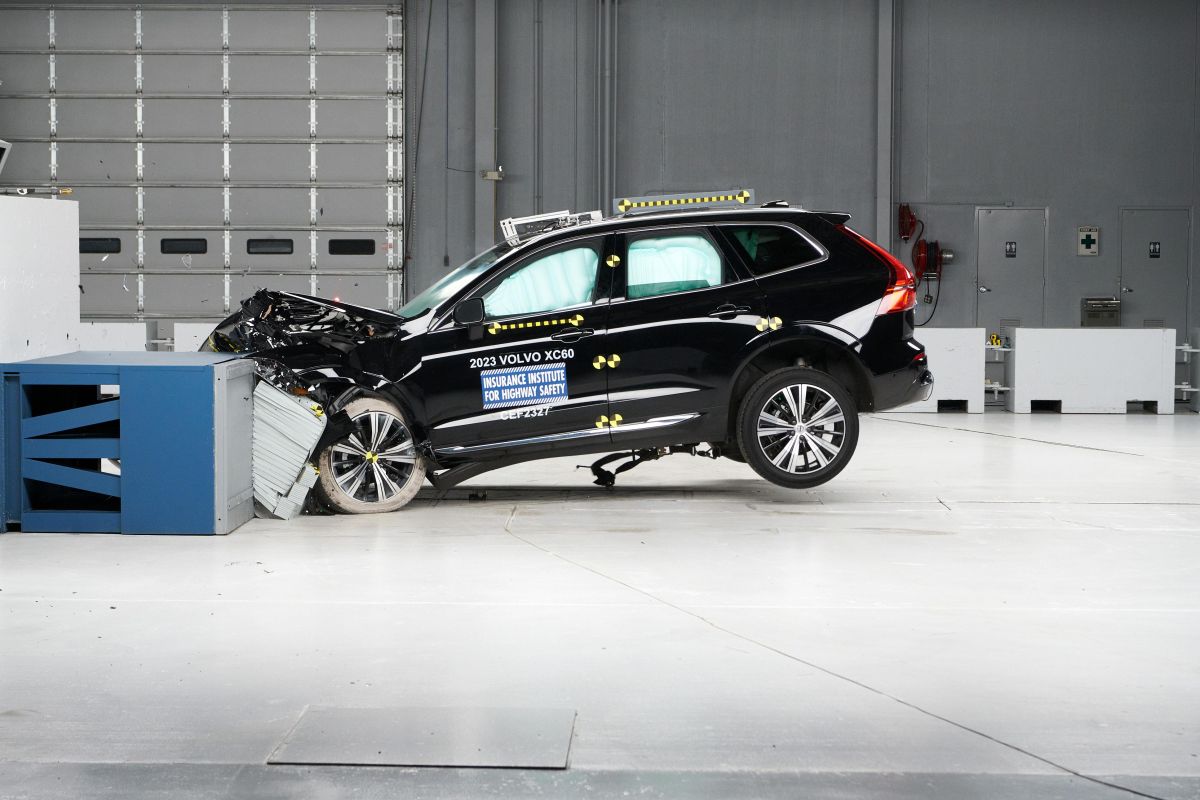Three midsize luxury SUVs offer solid protection for front and back seat occupants in the Insurance Institute for Highway Safety’s updated moderate overlap front crash test, which now includes a dummy positioned in the second row behind the driver.
The Lincoln Aviator, Mercedes-Benz GLE-Class and Volvo XC60 earn good ratings, while the Acura MDX and BMW X3 are rated acceptable. The Audi Q5 and Lexus RX earn marginal ratings, and the Cadillac XT6 is rated poor.
“It’s encouraging that more than half of the 2024 midsize luxury SUVs we tested performed well in our updated moderate overlap front crash test,” IIHS President David Harkey said. “The three good ratings in this group show that our new, tougher standards are achievable when manufacturers commit to excellence.”
IIHS launched the updated moderate overlap front test last year after research showed that in newer vehicles the risk of a fatal injury is now higher for belted occupants in the second row than for those in front. This is not because the second row has become less safe. Rather, the front seat has become safer because of improved airbags and advanced seat belts that are rarely available in back. Even with these developments, the back seat remains the safest place for children, who can be injured by an inflating front airbag, and the rating does not apply to children secured properly in child safety seats.
In the updated test, a second dummy is positioned in the second row behind the driver. The driver dummy is the size of an average adult man. The rear dummy is the size of a small woman or 12-year-old child. IIHS researchers also developed new metrics that focus on the injuries most frequently seen in back seat passengers.
For a vehicle to earn a good rating, there can’t be an excessive risk of injury to the head, neck, chest or thigh, as recorded by the second-row dummy. The dummy should remain correctly positioned during the crash without “submarining,” or sliding forward beneath the lap belt, which increases the risk of abdominal injuries. The head should also remain a safe distance from the front seatback and the rest of the vehicle interior, and the shoulder belt should remain on the shoulder, where it is most effective. A pressure sensor on the rear dummy’s torso is used to check the shoulder belt position during the crash.
As in the original test, the structure of the occupant compartment must maintain adequate survival space for the driver, and measurements taken from the driver dummy shouldn’t show an excessive risk of injuries.
All eight SUVs provided excellent protection in the front seat. The three good-rated vehicles also provided solid protection for second-row occupants, although in the Aviator the rear dummy’s head came nearer than desirable to the front seatback during the crash, while measurements taken from the rear dummy in the Mercedes-Benz GLE-Class indicated a slightly elevated risk of head or neck injuries.
For the two acceptable-rated vehicles, the injury measurements were within acceptable limits across the board, but the motion of the rear dummy during the crash was cause for concern. In the Acura MDX, the rear dummy submarined beneath the lap belt, increasing the chances of abdominal injuries. In both the MDX and the BMW X3, the rear passenger dummy’s head also came close to the front seatback, which raises the risk of head injuries.
Submarining was also a problem for the two marginal-rated SUVs. In addition, measurements taken from the rear dummies in these vehicles indicated a slightly elevated risk of head or neck injuries in the Audi Q5 and a more substantial risk of chest injuries in the Lexus RX.
The rear dummy in the poor-rated Cadillac XT6 also submarined beneath the lap belt, and measurements taken from the rear dummy indicated a moderate risk of head or neck injuries and a high risk of chest injuries.
“Though several vehicles in this class performed extremely well, the fact that we saw submarining in half the models we tested shows that many manufacturers still have work to do to improve restraint systems in the second row,” Harkey said.










